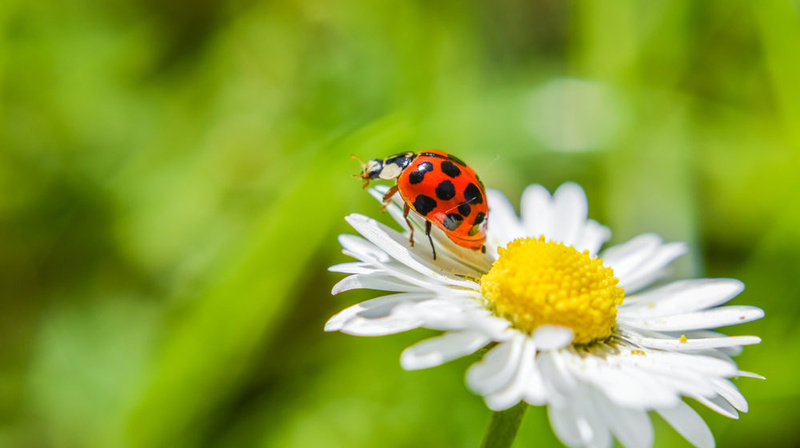
Control Landscape Pests Naturally: Insects, Oils, Soaps, and Minerals
From oil sprays to plant products to beneficial bugs, a wide array of natural pest controls is available to the environmentally conscious homeowner or landscaper. Most are easily found online or can be found at garden centers or nurseries.
More and more homeowners, gardeners, and landscapers are looking for environmentally conscious methods of controlling landscape pests. Gone are the days of indiscriminately blanketing landscapes with chemical sprays that seep into soil and cause hazardous runoff into lakes and streams.
In this article we look at several forms of natural pest controls: beneficial insects, oil sprays, plant extract products, mineral insecticides, and mineral soaps.
Good Bugs
Beneficial insects are those insects that eat unwanted bugs. Intentionally and specifically deployed, they can be highly effective at managing and eradicating pest populations.
These good bugs can be easily ordered online from numerous different sources. Ladybugs, lacewings, hoverflies, and syrphid flies eat aphids, mites, whiteflies, and scales. (These insects excrete honeydew, on top of which grows black sooty mold, the subject of an earlier blog.)
Earwigs and big-eyed bugs eat chinch bugs, small mole crickets, and sod webworms. Dragonflies eat mosquitoes. Praying mantises eat pretty much everything.
Products Made from Plants
Certain plants produce substances that, when extracted, can be highly effective natural pest controls.
Chrysanthemum petals, for example, yield a compound called pyrethrin when ground up. Pyrethrin as a product is pyrethrum. When this product comes in contact with ants, aphids, roaches, fleas, flies, and ticks, it causes paralysis.
Plants that produce strong odors, like garlic and onion, can be reduced and made into a spray that knocks down or knocks out landscape pests. These sprays can also be used as an insect repellant.
Tomato leaf and tobacco sprays control caterpillars and insects such as aphids. Alkaloids in the tomato plant–a member of the nightshade family–are the effective agent in the spray, which can be made from the water of chopped and steeped tomato leaves.
Oil Sprays
Soft-bodied, slow-mowing pests like aphids, scales, leafhopper nymphs, and whiteflies suffocate when coated with oil. Various types of oil sprays are on the market: citrus, eucalyptus, Neem, horticultural, and mixes of extracts.
Neem oil comes from the seeds of the Neem tree. Compounds in the oil are most effective against immature insects, which die within 24 hours of being sprayed.
Combinations of garlic, canola, sesame, and soybean oils yield natural pesticides that are commercially available.
Mineral Insecticides
Diatomaceous earth is a natural substance in pesticides that absorbs the outer waxy layer of a pest’s body and causes it to dry out and die. It is produced from silica deposits found in the sediment at the bottom of bodies of water. Diatomaceous earth has been used in pesticides since 1960.
Sulfur is most commonly used to control plant diseases, but it is also an effective agent against mites, psyllids, and thrips. It is a natural pest control that has been used by farmers and gardeners for centuries.
Iron phosphate is a natural substance typically used to manage slugs and snails. When these pests ingest iron phosphate, they stop eating and die. It dissolves in water, so application after irrigation is important.
Insecticidal Soaps
Insecticidal soaps are made from plant oils and animal fats. When directly applied onto pests such as aphids, scales, thrips, and whiteflies, it becomes an effective control.